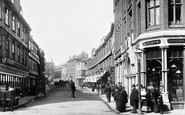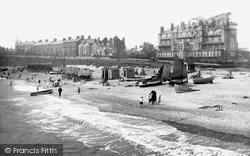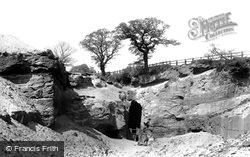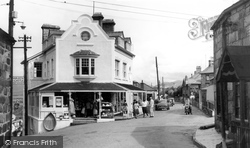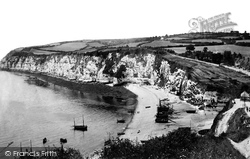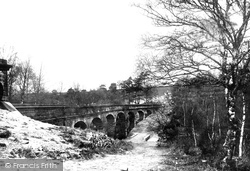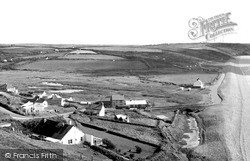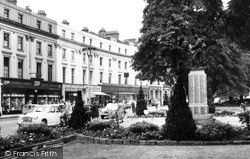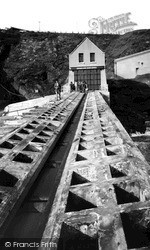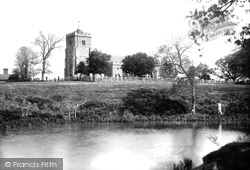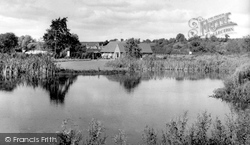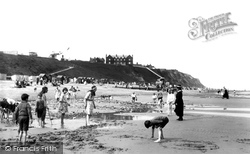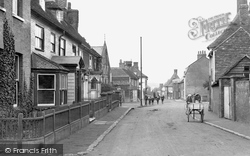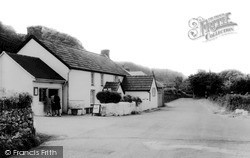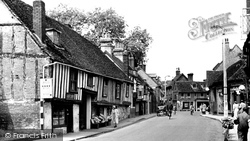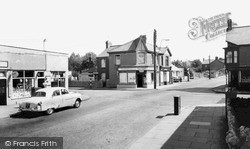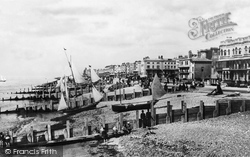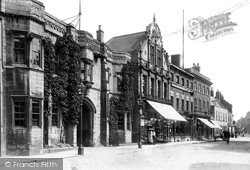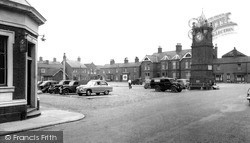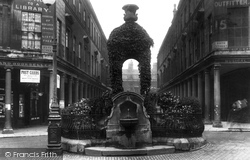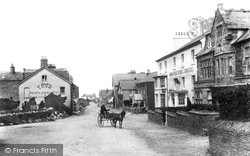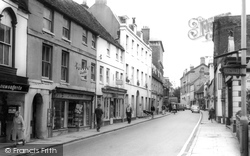Places
18 places found.
Those places high-lighted have photos. All locations may have maps, books and memories.
- Hythe, Kent
- Hythe, Hampshire
- Small Hythe, Kent
- Bablock Hythe, Oxfordshire
- Methwold Hythe, Norfolk
- Hythe, Somerset
- Hythe, Surrey
- Hythe End, Berkshire
- The Hythe, Essex
- Egham Hythe, Surrey
- West Hythe, Kent
- New Hythe, Kent
- Broad Street, Kent (near Hythe)
- Horn Street, Kent (near Hythe)
- Newbarn, Kent (near Hythe)
- Newington, Kent (near Hythe)
- Broad Street, Kent (near Hythe)
- Stone Hill, Kent (near Hythe)
Photos
360 photos found. Showing results 2,081 to 360.
Maps
101 maps found.
Books
10 books found. Showing results 2,497 to 10.
Memories
4,406 memories found. Showing results 1,041 to 1,050.
Arthur Hanford Military Medal
I have an old wristwatch which belonged to my great uncle, which was bought by the people of Abergwynfi, presented to rifleman Arthur Hanford on being awarded the military medal 1914.
A memory of Abergwynfi in 1910 by
What A Joy!
I am Pewsey born and bred and what a joy it is to discover a site where memories of our country's unique village life can be shared and stored for the future. So much to share about Pewsey life... I remember playing with all the children ...Read more
A memory of Pewsey in 1976 by
The Black Bear
In the late 50's early 60's my aunty Doreen and uncle Harold Willbye ran the Black Bear in Biggleswade. I loved going there, the old pub with stables out the back was fantastic as were the walks with their dog Dusty down by the ...Read more
A memory of Biggleswade in 1960 by
The Westerham 'flyer'
I travelled with my father on the Westerham branch-line in the summer of 1959, and as we were the only passengers boarding the empty train at Dunton Green, we were invited by the driver to accompany him and his fireman in the ...Read more
A memory of Westerham in 1959 by
Gilwern Boats In The Forties
The boats were owned by a Mr Goodin, he hired them out by the hour and people came from all the valleys to go on the canal. We as teenagers used to make some pocket money by rowing those that could not row up the canal. ...Read more
A memory of Gilwern in 1940 by
Folkstone Court, Newmarket Avenue
My name is Jo Buchanan, I used to live at 2 Folkstone Court and went to Islip Manor Middle School and would love to hear from anyone who remembers me from 1978-1988. I'll always remember going cooler picking, down by ...Read more
A memory of Northolt in 1980 by
The Ogmore I Knew
I was born in 1940 and attended Tynewydd Junior School then the Park School then Bridgend Tech. Even though we had the constraits dictated by the war, life was happy we had the mountains to explore. We would dam the river for ...Read more
A memory of Ogmore Vale by
Curls
I originally remember the (now) Debenhams being a bomb site on which cars were parked, then a new department store was built called Curls. The top floor boasted a verandah restaurant where, if I was good whilst out shopping, my mum would take ...Read more
A memory of Norwich by
Visiting Friendly Germans
Who still alive remembers the several small bombs dropped on the right side of the mountain looking down the valley. The 2 larger ones dropped on the left side and the three bombs dropped in the village itself that ...Read more
A memory of Cwmfelinfach in 1940 by
Searle The Boatbuilder
In the row of cottages on Pill Creek mentioned by Malcolm Macmeikan lived "old Searle" who built small boats in a shed on the quay on the opposite side of the creek. At age 11 or 12, I painted one of them, a rowing boat called ...Read more
A memory of Feock in 1930 by
Captions
4,899 captions found. Showing results 2,497 to 2,520.
However, the hotel's history was less than grand: it never recovered from the indignities of war-time requisition by the army, and was unceremoniously demolished in 1959.
Alderley Edge is possibly the earliest site of copper mining in England, as traces of Early Bronze Age activity was proved by the Manchester University's excavation here in 1997.
By the 1960s, more and more holiday visitors were arriving by car as well as by rail.
Rattenbury wrote of his experiences in his book Memoirs of a Smuggler; he spent his latter years living on a small pension provided by the local landowner, Lord Rolle.
Deep in the Colne Valley, Slaithwaite is dominated by the massive Worsted Mills.
In 1690 the Resolution was wrecked here and robbed "by the more unmerciful people of the neighbourhood".
By the end of the Napoleonic Wars a number of other springs had been discovered and developed.
The station was replaced by the present one around to the east at the more kindly location of Kilcobben Cove in 1961.
Struck by lightning in 1672, it was restored in 1862 by the architect David Brandon.
Burford sits right on the county boundary with Herefordshire - the boundary is defined by the River Teme at this point.
The café, run by the students, recently won an award as the best in the Midlands in a competition by BBC Midlands Today.
At the top of the public slope on the left may be seen the old Coastguard Station demolished in 1928 ; it was replaced by the building occupied today as a Coastwatch Station and museum.
Wye sits beneath the chalk hills of the North Downs; it has a 12th-century church, beautiful Georgian buildings and a college founded in the 1400s by the Archbishop of Canterbury.
Ho, everyone that thirsteth come you to the water: And he that hath no money come you'.
Nearby is the 13th-century Penrice Castle, which was originally built by the Normans after finally gaining control of the Gower in 1099.
A fine picture taken around 1905 shows that the added part had been a butcher's shop (and a public house called the Dial) run by the Crawley family.
Loughor, the starting point for this Carmarthenshire tour, is not actually in the county; it is separated from it by the river Loughor, and is on the outskirts of Swansea.
Prior to that it had been little more than a settlement of fishing cottages down by the beach, below the village of Broadwater.
The building to the right in photograph 33258 has, by 1904, been replaced by the elaborate buff terra cotta Flemish-style Boots building.
The town was probably established as a port on the Wainfleet Haven by Bardney Abbey, but by the 15th century the haven silted up and the port declined.
By the 1950s cars were already a problem on the streets of Lyme, because of the lack of parking spaces. Present-day Lyme bans traffic from the sea front.
It is very close to architectural perfection: the effect is marred by notices and posters (note that for artificial teeth in a first floor window,) and comprehensively so by the fountain in the foreground
Visitors can stay at the King Arthur's Castle Hotel where once, no doubt, Arthur entertained Guinevere, or queue for fish and chips in the same establishment once patronised by the Knights of the Round
Boots and International Stores had both been long-term tenants of this corner, but in 1976 Boots moved away, and the Leeds Permanent Building Society, followed by the Halifax, moved in.
Places (18)
Photos (360)
Memories (4406)
Books (10)
Maps (101)




